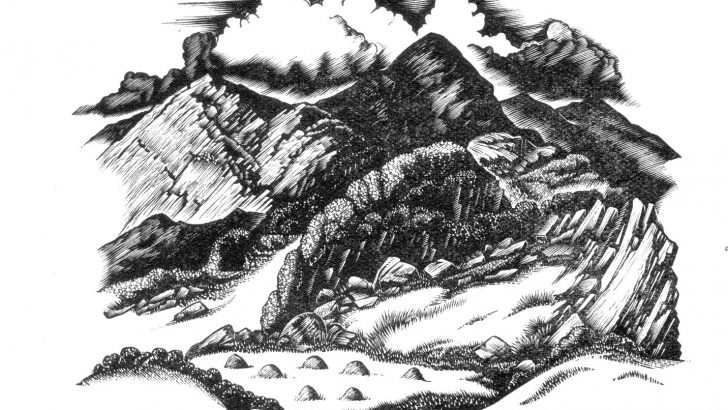Mainly about books
By the books editor
The great and internationally-regarded art galleries of Ireland (though now for a period of months necessarily closed) are institutions we are all rightly proud of. I sometime think, though, that they do not always do full justice to some talents who worked in what some might think of a lower key.
I think here especially of the Cork-born artist Robert Gibbings (1889-1958). He was not only a painter, but an engraver on wood, a book designer, small press printer, a naturalist and author of a long series of travel books that are in a genre of their own.
He was born of a well-known Cork city clan: his uncle was Robert Day, the noted antiquarian of the Victorian era, whose generous donations of items were the foundation of many local collections, items not just from Ireland, but from cultures around the world. Mr Gibbings often wondered if some of his activities were not due to a quirky inheritance of some kind.
His father was a Church of Ireland clergyman. He might have been Bishop of Limerick once, Robert thought. But rose no higher than a canon of Cork cathedral. He was known personally or by sight to everyone in the Edwardian city.
Great War
Robert went to fight in the Great War as so many of his generation did. Destined before the war for the Anglican ministry, he changed vocations, and decided on art instead. He found that he had little taste for painting. What he did have was a marked talent for engraving on wood. He was one of the leading figures in the revival in etching and wood engravings between the wars. (For Penguin he edited a series of classics with engraving by some ten artists of the day, which are now collectors’ items.)
He first made his name though as a fine art printer, very much in the William Morris tradition, founding the Golden Cockerel Press. The books he produced there are also prized items in many libraries.
In a wider market he scored a popular success with Blue Angels and Whales (a Penguin Special of 1936), recounting and illustrating his underwater adventures.
Soon after leaving his post at Reading university, he published Coming Down the Thames, which became a bestseller. This was followed by books on the Wye, the Seine and other rivers. These were all written in a gentle allusive but always attractive and engagingly informative style.
Books
He wrote a long shelf of books which I have been re-reading in these weeks of enforced leisure. Through the pages there are many allusion to Irish years, but three of them are whole Irish in inspiration and content: Lovely is the Lee (1945), Sweet Cork of Thee, and John Graham Convict, “an historical narrative” which connects rural Ireland of 1824 with prisoners in Botany Bay.
The South Seas were very much his second home, but in his mind were connected with Ireland. It is two Irish children, inspired by his own children, who live out his Pacific cast-away tale for the young, Coconut Island.
In his books about the River Lee he writes about that remarkable couple Timothy Buckley and his wife Anastasia, of Garrynapeaka, whose full story was later told by Eric Cross. When Mr Cross’s book, The Tailor and Anstey, was later reissued and rediscovered as “a modern Irish classic”, a series of his lovely images of rural Ireland as he had known it in the first half of the 20th Century, were used to illustrate the text.
Later on Mr Gibbings moved to Paris and rambled round France, re-discovering oil painting as a medium. I am afraid I do not care for these as much; but then that is perhaps because I have never seen enough of them. They call for an exhibition. But then his whole life deserves an exhibition to do full justice to it.
Here is a future project for the pandemic-free years soon to come, perhaps for the Crawford in Cork. The imaginative people who run that fine gallery should set to work on it now. This is the time, if ever there was, to celebrate the quiet kindly sides of Ireland in the years of our parents and grandparents, so easily over-looked in the commemoration other affairs.


 Peter Costello
Peter Costello

